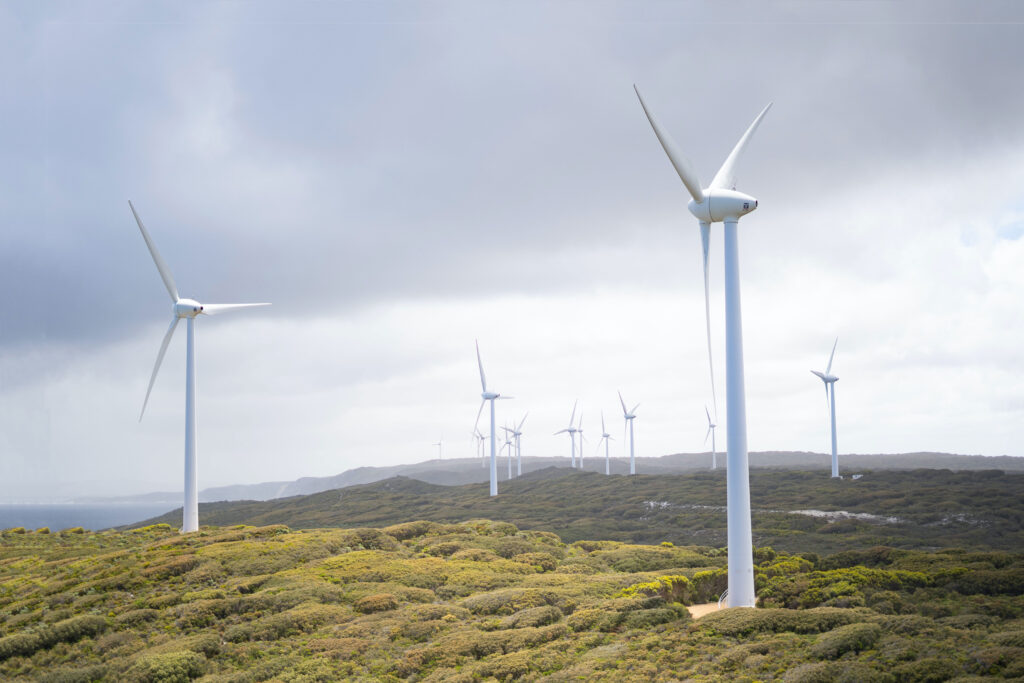Volcanoes are erupting in The Philippines, but on-fire Australia received some welcome rain. The Iran war cries have been called off and The Donald’s military powers are about to be hamstrung by the Senate. Meanwhile, his impeachment trial is starting, and we’re all on Twitter for a front-row seat.
Have we made any progress on climate change?
Yes. We're not on track for 1.5 degrees Celsius of warming, but we're in a very different place than we were even five years ago.

“Over the past few years, I’ve been asked one question more than any other,” New York Times columnist Ezra Klein opened his June op-ed. Is it morally conscionable to have children, given the future it is assumed climate change will wreak on the planet?
I write the newsletter What Could Go Right? for the nonprofit media organization The Progress Network. Every week, the newsletter focuses on what progress the world has made on key issues and how to keep it going. One of the most unpopular, and in some circles, controversial ideas I write about is that climate change will not pose an existential risk to the planet. As Kelsey Piper recently wrote in Vox, it won’t “even lead to our children living in a world poorer than the one we grew up in. As many climate scientists have been telling us, the world is a better place to live in—especially for people in lower-income countries—than it has ever been, and climate change isn’t going to make it as bad as it was even in 1950.”
Why? We are in a very different place than even 5 to 10 years ago, when the 2015 Climate Accords were signed in Paris that committed the world to under 2 degrees Celsius of warming, and preferably 1.5 degrees. We have already averted the worst-case scenarios that were so alarming around that time. Before 2015, we anticipated four degrees of warming by the end of the century, which, as Klein says, would have been “cataclysmic.” Now we’re on track for just under three, and new climate commitments, if met, would bring us to two.
That is a big “if,” of course. But there have been substantial shifts in governmental and corporate appetites to tackle the issue as public attention around climate change grows and steadies, bolstered by energetic activism around the world. Hundreds of billions of dollars are being poured into clean energy projects and technology, like scaling up carbon capture, that are part of the roadmap to hitting net-zero by 2050.
Meanwhile, renewable energy costs are plummeting. “In much of the world, solar and wind power are now cheaper than coal and gas,” reporter German Lopez wrote in The New York Times’ morning newsletter in April on climate optimism. The cost of batteries, too, has nosedived, making “electric vehicles accessible.” The electric vehicle market is indeed blazing hot, in part due to skyrocketing gas prices. In Britain, for instance, more electric cars were bought in March 2022 alone than in all of 2019.
Russian President Vladimir Putin’s invasion of Ukraine, in addition to driving up gas prices, has also spurred quick action around renewable energy in the European Union (EU), in an effort to end dependence on Russian oil and gas. Many countries that had once sworn off nuclear—even Japan—are now taking another look at it. Finland is about to turn on a nuclear power reactor, the first in Western Europe in at least 15 years, that will provide the country with almost 15% of its electricity.
While global emissions have remained stubbornly unbent, many people do not know that several rich countries have seen declines in greenhouse gas emissions in recent years. The United States’ greenhouse gas emissions have decreased by about 20% in the last 15 years, for instance. (Proof here.) And the EU overshot its 2020 target, slashing emissions by 34% in comparison to 1990 emissions levels. That is not enough for the US or the EU to be on the right track vis a vis climate change. But it’s important to know that many rich countries have reduced emissions, and with no cost to economic prospects—an extremely important change, as it was once not possible to lessen emissions without jeopardizing economic growth.
Part of the reason why it has been so hard to bend the curve of global emissions is because developing countries are, well, developing. Countries like Mongolia, Pakistan, Kazakhstan, Vietnam, Kenya, and the Philippines have more people who are looking to live life at the quality of people’s lives in rich countries. That’s excellent, but that requires more energy, which means those nations are looking to dirty sources to fill energy demand. Still, we may have already hit peak emissions in 2019. Even if not, the peak is estimated to be within this decade.
We have also made progress on climate adaptation. As author of The Uninhabitable Earth David Wallace-Wells said on The Good Fight podcast in May, ”many of these projections . . . do treat human adaptation, resilience, and growth as irrelevant. And that’s a problem. These climate impacts are only half of the story, and how we respond, grow, and develop along the way is the other half.” For instance, many low-lying nations at risk for disappearing underwater have actually gained land while sea levels have risen. The Maldives, for one, grew in size by constructing an entirely new island where 50,000 people now live by “pumping sand from the sea floor,” as Joakim Book wrote for HumanProgress. Meanwhile, South Korea is busy figuring out how to make a floating city.
Similarly, The United Nations has called to build early warning systems for natural disasters worldwide, and technological experimentation is ongoing. In Greece, for instance, telecommunications company Vodafone is testing out smart technology that would send early alerts for forest fires.
In April, The International Panel on Climate Change (IPCC) released a report that focused on climate mitigation. The quote from the report’s working group co-chair Jim Skea that “it’s now or never” to bring emissions down was the one that got a lot of play in the media. But the press release that quote is from actually struck a more constructive tone overall. It’s unlikely that we’ll move as quickly as needed not to breach 1.5 degrees of warming. But once surpassed, we’re not stuck there. “It is almost inevitable that we will temporarily exceed this temperature threshold,” the IPCC release says, “but could return to below by the end of the century.” It’s a relief to know that every piece of future action around climate change will matter. And every tenth of a degree we can bring down warming matters, too.
None of this, naturally, is to downplay the suffering that climate change has already wrought and will continue to do. We haven’t emphasized those outcomes here as they are well-covered elsewhere.
Distress and defeatism from the narrative that absolutely no progress has been made around climate change are rampant. While no sudden miracles have occurred, with enough collective will, we can make progress, and already have. When it comes to climate change, the mountain in front of us remains quite tall indeed, but thinking it unscalable does about as much good for getting us to the top as pretending it’s not there.



2 degrees is still catastrophic… 1.5 degrees is still catastrophic… these represent the end of entire classifications and phyla of life. We need zero now. Not later, not net zero… we need zero degrees change NOW… we have no ability to halt the damage once classes start going extinct… this is a mass extinction event and making it seeem like we’re meeting goals when we’re not is absurdity.
We have to start going back toward zero by 2030 or we fry the planet. And I’m talking half of the remaining half of all life. Please start sounding the alarm… don’t let people fail to understand this… we’re NOT in a good place… we cannot become accepting of even 1.5 degrees. We’re killing the planet to the tune of 5 nuclear bombs of heat per second… 5, 10, 15, 20… please help.
You probably learned in grade school about the Vikings settling on Greenland over 1000 years ago. They had dairy cattle and were able to grow enough feed for their cattle to survive the winter. That would indicate temperatures about 1 – 1/12 degrees warmer than today. It wasn’t the heat that drove them out of Greenland, it was the cold. One and a half degrees will not be catastrophic. It will be a net benefit.
2 degrees is still catastrophic… 1.5 degrees is still catastrophic… these represent the end of entire classifications and phyla of life. We need zero now. Not later, not net zero… we need zero degrees change NOW… we have no ability to halt the damage once classes start going extinct… this is a mass extinction event and making it seeem like we’re meeting goals when we’re not is absurdity.
We have to start going back toward zero by 2030 or we fry the planet. And I’m talking half of the remaining half of all life. Please start sounding the alarm… don’t let people fail to understand this… we’re NOT in a good place… we cannot become accepting of even 1.5 degrees. We’re killing the planet to the tune of 5 nuclear bombs of heat per second… 5, 10, 15, 20…
Thank.
You.
[…] context into a national response. Given Russia’s invasion of Ukraine, it is more likely that climate progress will stall in the coming years, making it more difficult for fossil fuel plants to close. The Paris […]